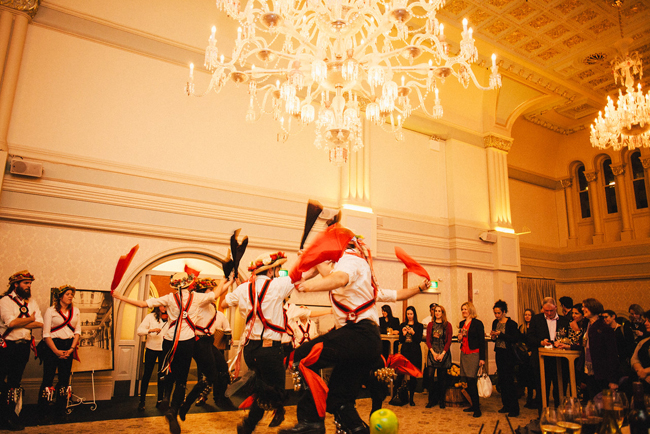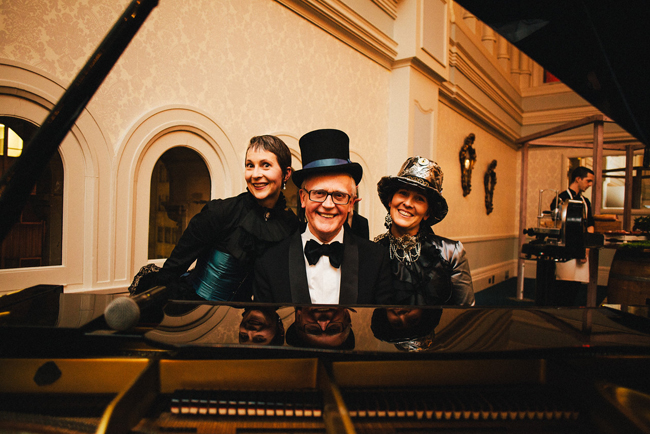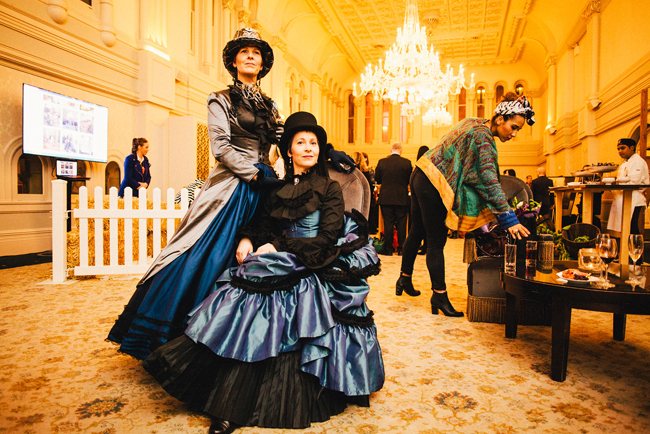When the invitation to The Tea Room event tonight popped up in your inbox, did you know The QVB was once the old Sydney Markets? Did you know where you are standing right now, right here was once upon a time a marketplace for fruit and vegetables? I didn’t. Yes, there is a reason why the street some of you crossed to get here is called “Market Street”.
What was your earliest memory of the markets in Sydney?
I grew up in the 80s during a time where Paddy’s Markets, now Market City, was still around. I use to tag along with my mother to Paddy’s markets on a Saturday, which started off with lots of enthusiasm and later became a chore as I caught on I was really there to help carry bags of apples, & oranges back home. The only consolation for going to the markets was that I loved the pet section in Paddy’s Markets … cute puppies, kittens, and budgies. Does anyone remember that? I always saw the markets as a place where I get my pet Budgies. I went through half a dozen of them growing up in my childhood not because I didn’t look after them but because the cat next door always managed to get to them every time I was at school.
Well, the old Sydney markets in the 1800s was established where we are standing today but it wasn’t a place to buy pet budgies. It was a trading place for fruit and vegetables. The marketplace was filled with farmer’s produce that were traded to ensure the people of Sydney had enough to eat.
Sydney when it began as a colony in the late 1700s almost failed because people were starving…Fresh food was problem. It was scarce. When the 1st Fleet arrived to Sydney, convicts, sailors, marines were hungry and sick. Even Governor Phillip knew he had to be a farmer before he could be a governor …
On-board the First Fleet were supplies that were imported to Australia. On his journey to Sydney, the governor selected seeds he thought would grow in NSW including cocoa, coffee, orange, lemon, banana, and rum from Rio de Janeiro & at the Cape of Good Hope he picked up fig, bamboo, apples, seeds that include rice, barley & Indian corn. These were heavily protected in a government house that was used to store these goods. The penalty was usually death for anyone found stealing.
The storehouse, in one sense was a precursor of the market as it was where convicts & sailors gathered each week to collect their week’s food rations, exchange gossip and trade food scraps for rum & tobacco.
Times were tough back then for the 1st settlers. Did things pick up? They certainly did. Land in NSW was cleared by convicts & Government farms were set up in what is known as Parramatta today and Sydney where fresh vegetables and grain crops were grown. The possibility of being pardoned and land being granted to convicts made them work even harder on government farms.
By 1792, farmers produced enough to feed themselves with some excess. The Governor made it clear that settlers and convicts could sell any surplus at a fair market price and this was one of the earliest references to Sydney markets.
Now if we fast forward 20 years later, a man by the name of Macquarie became Governor.
The market during Macquarie’s days was originally located in The Rocks area out of convenience. That’s because the goods sold in the markets came down the Parramatta River & offloaded at the wharves in The Rocks.
Did you know that criminals were once tied up on a pole in a central part of the markets & forced to endure ridicule and public anger? It’s not hard to imagine how the market people got rid of rotten tomatoes and eggs each day.
One key thing that Macquarie did was reorganised the town and moved the markets to the site of where The QVB stands today. The problem with The Rocks area, as you might have noticed, is that the land is not level and caused congestion – soldiers on parade use to be tangled up with runaway cattle.
So the central markets was set up here on George St. This area was actually considered the “outer Sydney region”. It was set up next to the old burial grounds, where Town Hall is at the moment. Actually I was just talking to someone the other day who works with NSW Transport and I heard the underground excavators are bumping into coffins as work progresses on the new George Street Light rail project. A sure way to awaken the dead I would have thought!
The old George St markets were set up as wooden halls and Macquarie had plans to replace them but that never came to light as he was confronted with plenty of opposition.
By the 1820s the volume of trade continued to grow so significantly it stretched the capacity of the wooden market sheds on George St. And the marketplace simply could not cope with livestock …. Can you imagine the noise, stench of manure, stray animals right here in the middle of the city, & animals wandering in the graveyards next door. It became intolerable.
It wasn’t until the mid-1800s (1834) that Governor Bourke carried out the plans to create the new George St Markets & also relocated the hay, & cattle markets to the area we now call Haymarket … yep there is a reason why it’s called Haymarket.
It is significant to pause here and mention a lady by the name Maria Ann Smith, who migrated to Australia in 1839, cleared some land in Ryde and planted a small orchard from seeds that created a new strain of freak apples. She sold her apples weekly at the George St Markets. This lady was also known as … “Granny Smith”, famous for her luscious green skinned apples. I wonder if Granny Smith ever envisaged her apples would be on The Tea Room menu tonight. Yes thanks to The Tea Room’s Head Chef Rob, there are Granny Smith Apple Crumble pies on the menu tonight.
By the late 1800s, the George St Markets were so run down, an eye sore and finally pulled down and replaced with the grand & magnificent structure called the Queen Victoria Markets Building designed by the city architect of time called Georg McCrae.
…The building we are in today.
The basement area of this building was designed for a fruit and vegetable market…
But, the new Queen Victoria Market Building failed as a fruit and vegetable market as it was too hard to transport these goods here. People preferred the old Campbell St Market site which was closer to road and water transport.
The real intention for the building was to create a classy shopping centre in the main part of town.
In the early days of the QVB, the basement was a large wine cellar stocking Lindemans and Penfolds wine.
There was an amazing & eclectic mix of tenants in the early days of the QVB …. ranging from tailors, sellers of wine and Chinese tea, florists and fortune tellers, corset fitters, milliners, bootmakers, herbalists, importers of fly catchers & even rabbit netting.
Before my research of the QVB’s history, I hadn’t appreciated the important role the Sydney markets … that were right here… played in feeding the city and ensuring its continuing survival. Times have changed, food is abundant, people experiment with flavours, and people photograph food before they eat it. Can you imagine if I went up to a farmer of 1800s & asked him if I could photograph his potatoes to post on Instagram? Hashtag howtimeshavechanged ….
Have you thought about what story will be told of The QVB in the next 200 years? As the population grows and we have a growing thirst for new technologies and innovation, we may see things like the word “Western” drop of “Western Sydney” as Sydney continues to grow; we may see new foods on the menu that taste like meat but eliminate the need for cattle, ensuring a more sustainable living; we may see face recognition technology as we walk in The QVB that tells you in a nanosecond where the sales are and what to buy, where to eat…
The Tea Room has been transformed tonight so you can live and breathe what it was like right here in the 1800s in the heart of Sydney – you have the livestock Percy and Peppa, the micro pigs roaming around somewhere …. and hopefully right away from the charcuterie station – a representation of the meat markets that were here; you have the seafood station – representation of the fish markets; there is even a tea reader – a representation of the oriental bazaar in the early QVB days; you have Apple Brandy Cooler and Hammered Farmer cocktails all served with rum – which was once used as currency for scraps of food in the colonial days … and of course the legacy of Granny Smith lives on … in the apple crumble pies served here tonight …
… and finally we also have a group of dancers … that give you a taste of old England. Queen Victoria celebrated her Golden Jubilee in 1887 with these dancers…
So now, Ladies & Gentlemen, please welcome the Black Joak Morris Dancers!
 |
| Hanging out with Elle from Better Homes & Garden and Scarlett, Fashion Blogger of Trends VIP |
 |
| Posies from Best Buds Florists at The Tea Room Event |
The following photos below are the courtesy of Artof2 photographers Anton and Ceri, my Blog’s event photographers. Love their work. They really know how to capture the right moments! Enjoy their photography.
 |
| Love to see my audience’s reaction as I delivered my speech! |
 |
| Orlando & Luke from Black Velvet, Scarlett from Trends VIP and Elle from Better Homes & Garden |
 |
| Morris Dancers at The Tea Room’s Old Sydney Markets event |
 |
| Scott Ehler The Pianoman |
Level 3
The Queen Victoria Building
455 George Street,
Sydney NSW 2000
http://thetearoom.com.au/
















